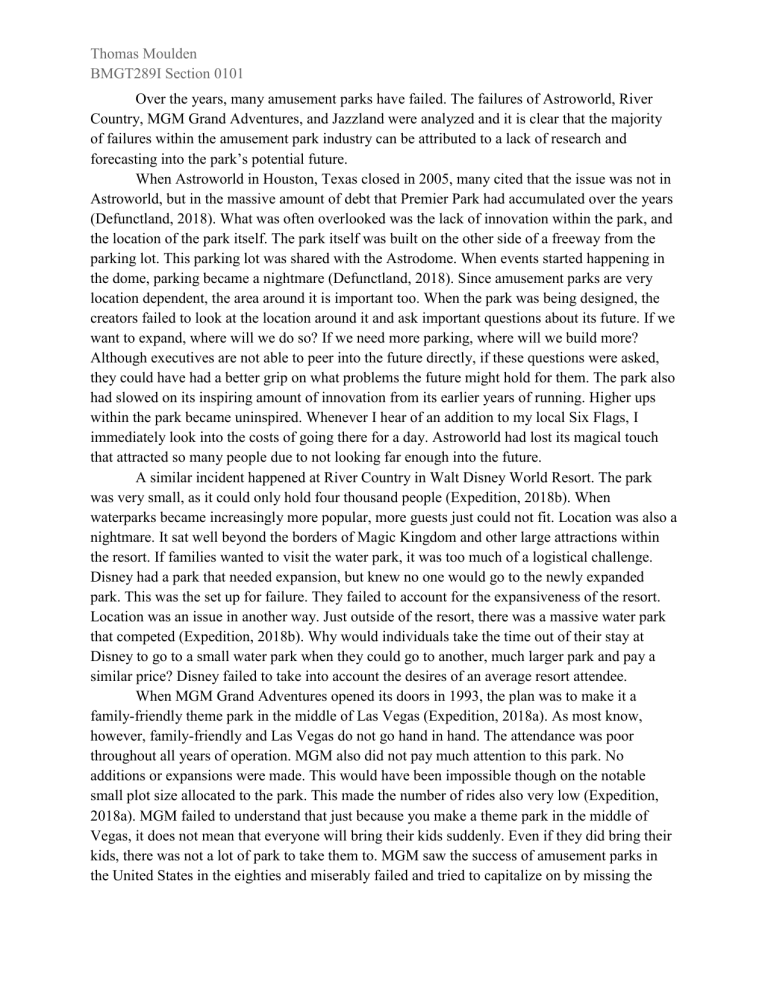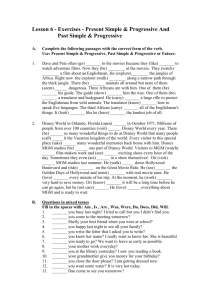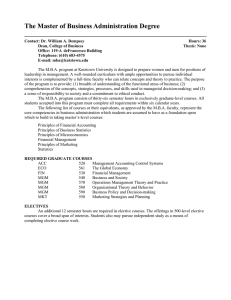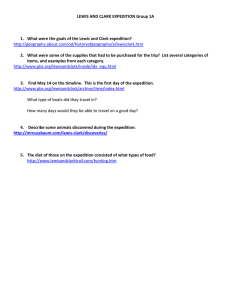
Thomas Moulden BMGT289I Section 0101 Over the years, many amusement parks have failed. The failures of Astroworld, River Country, MGM Grand Adventures, and Jazzland were analyzed and it is clear that the majority of failures within the amusement park industry can be attributed to a lack of research and forecasting into the park’s potential future. When Astroworld in Houston, Texas closed in 2005, many cited that the issue was not in Astroworld, but in the massive amount of debt that Premier Park had accumulated over the years (Defunctland, 2018). What was often overlooked was the lack of innovation within the park, and the location of the park itself. The park itself was built on the other side of a freeway from the parking lot. This parking lot was shared with the Astrodome. When events started happening in the dome, parking became a nightmare (Defunctland, 2018). Since amusement parks are very location dependent, the area around it is important too. When the park was being designed, the creators failed to look at the location around it and ask important questions about its future. If we want to expand, where will we do so? If we need more parking, where will we build more? Although executives are not able to peer into the future directly, if these questions were asked, they could have had a better grip on what problems the future might hold for them. The park also had slowed on its inspiring amount of innovation from its earlier years of running. Higher ups within the park became uninspired. Whenever I hear of an addition to my local Six Flags, I immediately look into the costs of going there for a day. Astroworld had lost its magical touch that attracted so many people due to not looking far enough into the future. A similar incident happened at River Country in Walt Disney World Resort. The park was very small, as it could only hold four thousand people (Expedition, 2018b). When waterparks became increasingly more popular, more guests just could not fit. Location was also a nightmare. It sat well beyond the borders of Magic Kingdom and other large attractions within the resort. If families wanted to visit the water park, it was too much of a logistical challenge. Disney had a park that needed expansion, but knew no one would go to the newly expanded park. This was the set up for failure. They failed to account for the expansiveness of the resort. Location was an issue in another way. Just outside of the resort, there was a massive water park that competed (Expedition, 2018b). Why would individuals take the time out of their stay at Disney to go to a small water park when they could go to another, much larger park and pay a similar price? Disney failed to take into account the desires of an average resort attendee. When MGM Grand Adventures opened its doors in 1993, the plan was to make it a family-friendly theme park in the middle of Las Vegas (Expedition, 2018a). As most know, however, family-friendly and Las Vegas do not go hand in hand. The attendance was poor throughout all years of operation. MGM also did not pay much attention to this park. No additions or expansions were made. This would have been impossible though on the notable small plot size allocated to the park. This made the number of rides also very low (Expedition, 2018a). MGM failed to understand that just because you make a theme park in the middle of Vegas, it does not mean that everyone will bring their kids suddenly. Even if they did bring their kids, there was not a lot of park to take them to. MGM saw the success of amusement parks in the United States in the eighties and miserably failed and tried to capitalize on by missing the Thomas Moulden BMGT289I Section 0101 most important factors for profit. A good park needs a good location, a well thought out plan, and a reasonable amount of future proofing. MGM Grand Adventure had zero of these three factors. Jazzland suffered a similar fate as the MGM park in terms of location. The park was constructed in East New Orleans which is very poor (Expedition, 2019. Since its location is very out of the way, it needed ample advertising. The park did not receive this. Jazzland was bought by Six Flags, but the main issues still remained. Just because land is cheap, does not mean that the land should be bought. Obviously, the true fate of the park in the hands of Six Flags will never be known as Hurricane Katrina destroyed it (Expedition, 2018a). Despite the hurricane, the park was still an outright failure due to poor research of the area it was built in. In summary, these four amusement parks failed very differently from one another in method, but similarly in style. Amusement parks are an investment into real estate as they are an investment into location-based entertainment. Astroworld, River Country, MGM Grand Adventures and Jazzland all failed mostly due to their location. If Astroworld had more parking it might still be around today. If River Country was closer to the rest of Disney it might still be around today. If MGM Grand Adventures was not in Las Vegas it might still be around today. If Jazzland was not in the worst part of New Orleans it might still be around today. In addition, these four parks failed to look slightly far into the future and make solid plans. If Astroworld maintained its initial level of innovation it may have succeeded. If Disney planned on introducing other parks in the area around River Country to make it feel more connected to the resort, it may have succeeded. If MGM Grand Adventures had decided in the beginning that if the kid-friendly model does not work, that it would shift into a more Vegas style entertainment location, it may have succeeded. The failures of these parks can be split up into two themes. The first failure was location and the second failure was inaction. Once the park is built, there is not much to be done about the location, but all of these parks failed to adapt and take action. Thomas Moulden BMGT289I Section 0101 References Expedition Theme Park. (2019, February 3). The Abandoned History of Jazzland/Six Flags New Orleans | Expedition Extinct. YouTube. https://www.youtube.com/watch?v=_egdrC8bZJE. Defunctland. (2018, May 31). Defunctland: The Demolition of Six Flags Astroworld. YouTube. https://www.youtube.com/watch?v=fec3jhPGTwY. Expedition Theme Park. (2018, February 23). The Closed History of MGM Grand Adventures Theme Park | Expedition Extinct. YouTube. https://www.youtube.com/watch?v=2KrtHutvdb4. Expedition Theme Park. (2018, June 23). The Abandoned History of Disney's River Country | Expedition Extinct. YouTube. https://www.youtube.com/watch?v=kpjRF5E7H7g.



